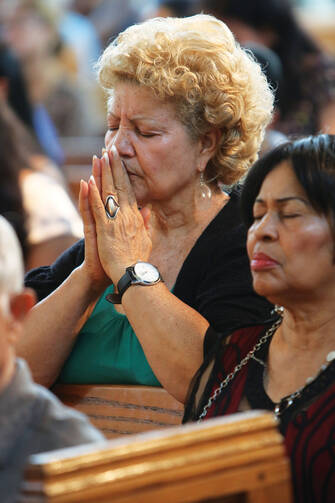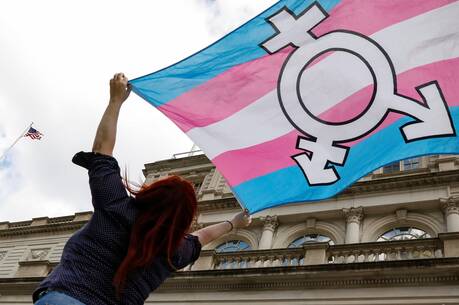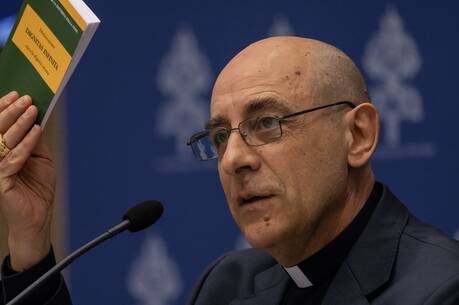Americans appreciate order. We stand in tidy lines as children at school; exits along the interstate highways have sequential numbers; people stop for red lights in the middle of nowhere or in the middle of the night. Perhaps, to be more accurate, we fear and resent disorder. I remember hiking through a shopping mall in Guadalajara with a priest from the United States who was flustered by how difficult it was to find the movie theater. Where were the mall maps so common in the United States? At the Jesuit university where I teach, I remind students that, faced with cultural differences, human beings frequently make moral judgments. Nothing provokes such judgments among Americans like perceived disorder. My priest friend did not wonder about the logic of a Mexican mall but declared dismissively that Mexico itself was a disorganized mess. Unfortunately, our moral disdain for disorder often appears in concert with broader expressions of bias or prejudice.
Perhaps the association was inevitable, since both a love of order and various forms of prejudice have deep roots in U.S. history. Regarding the former, the cultural legacies of both the Reformation and the Enlightenment played a part. Because the Reformers saw the human being as totally depraved without faith in Christ, Puritan settlers in New England went to extraordinary lengths to preserve their theocratic order. While the thinkers of the American Enlightenment had a much more optimistic view of human nature, they saw the social order as the outcome of a contract between governed and governors, a contract marked by law. Without law, there would be social chaos. Such a view of the political order (and the economic order of free-market capitalism) has traditionally depended on an individualistic view of the human person. Autonomous individuals naturally seek their own interests. Laws create boundaries for individual behavior, and the resulting political order makes space for the free and orderly operation of the market. Almost no one in our society challenges the orthodoxy of a social order rooted in laws that keep chaos at bay.
Yet perceptions of chaos in American history have often coincided with racial, ethnic and religious prejudice. The definitions of civilization and order have skewed white and Protestant. American Indians were called “pagans” and “savages,” and their destruction was rationalized by such terminology. Antebellum Americans worried about the chaos unleashed by freed slaves who, they assumed, would not know how to conduct themselves properly in society. Even Abraham Lincoln once assumed that no real order could come from blacks and whites sharing a country. By law in many states, even one drop of African blood made a person “unfit” for white civilization.
Through much of the 19th century, Irish Catholic immigrants were seen as drunken barbarians living in urban squalor, and Chinese immigrants were perceived as inscrutable aliens unworthy of trust or citizenship. Mormons were crazed pagan extremists. Southern and eastern European Catholics and Jews were people of inferior intelligence whose entry had to be restricted lest American civilization be “diluted.”
Even today, the association between disorder and certain races, ethnicities or religions persists. While both President Obama and his Republican predecessor, George W. Bush, clearly distinguished the violent and chaotic radicalism of ISIS or Al Qaeda from the faith of the majority of Muslims, other politicians and pundits have cast aspersions on Muslims as a whole and have even proposed a complete curb on Muslim migration to the United States. This sounds very much like the tirades against Catholics of a century ago.
The anthropologist Leo R. Chavez has written about a “Latino Threat Narrative” that appears in various forms of public discourse, from Internet comment sections to talk radio to bestselling books. Characterizing Latino immigrants as purveyors of chaos, it calls them invaders and criminals, disordered people who take advantage of the social safety net and produce “anchor babies.” Transparent expressions of racial, ethnic and religious stereotyping persist because they are cloaked in the language of obeying the law or preserving the social order. Many Americans find it easy to accept Donald J. Trump’s stereotyping of Mexican immigrants as criminals and rapists because it hides behind a rhetorical desire to defend the homeland from immigrant and Islamist chaos.
Prejudice in the Pews
I worry that this pairing of disorder and prejudice may play out even in our faith communities. Many Catholic parishes in the United States are an uneasy yoking of Anglo and Hispanic communities that I call shared parishes, with distinct Masses and distinct ministries in English and Spanish. Most Catholics find the arrangement practical. People can worship in the language of their hearts; immigrants have time and space to adjust to life in the United States; and longtime residents can adjust to changes in their communities. But the demographic transitions that produce such parishes also create what the Rev. Stephen S. Dudek of the Diocese of Grand Rapids calls “crucibles of grief.” Immigrants mourn the families and homelands they left behind, and they sometimes experience little welcome in the communities they enter, leaving them feeling isolated and lonely. Longtime residents watch helplessly as the cities and towns they have known all their lives change forever. They smell food they cannot identify, hear music they do not appreciate and see signs in languages they cannot decipher.
Having researched a number of these parishes, my concern is that this grief—and the anger and nostalgia that come with it—induces too many Euro-American Catholics to think and speak of their immigrant brothers and sisters in a negative way and to join the refrains of the “Latino Threat Narrative” in settings where Christian faith should take precedence. The Pew Research Center reported last fall that 41 percent of all Americans see immigrants as a “burden” on our society, but 55 percent of white (i.e., non-Hispanic) Catholics do. More than a third of white Catholics do not think undocumented immigrants should be permitted to stay, even when the strict conditions included in immigration reform proposals are met.
Some years back, I spent a year studying a shared Latino-Anglo parish in an area only recently touched by immigration. Some longtime Anglo parishioners openly admired Mexican culture, but there were also overt expressions of prejudice—expressions of disgust while pronouncing the word Mexican, or a school volunteer remonstrating with a child for speaking Spanish at recess to his frightened and newly arrived classmate. The most consistent negative comments were about those who had come to the country illegally and stayed on without authorization. Even white parishioners who criticized their nativist friends and relatives still saw unauthorized status as transparently immoral. Almost no white Catholics seemed to recognize that many of the upstanding parishioners they knew, people with families and houses and leadership roles, were themselves undocumented.
Another common complaint in the English-speaking community at the parish was that Mexican immigrant parishioners were disorderly. They left parish doors open, did not know how to park properly, disrupted the order of books in the school library and left meeting rooms in disarray. (In other parishes, I have heard people speak of Latino communities as “noisy” and complain that their children are always wandering about.) One Latino catechist found it expedient to buy new pencils for the parish rather than track down every reported theft of one. Each time a complaint about disorder surfaced, Anglo parishioners mostly assumed Hispanics were responsible. The pastor and staff would try to avoid specific blame and instead instituted new parish rules, in a tribute to that peculiarly American faith that more and better rules can prevent any problem. Pastoral leaders in the Mexican community often exhorted Spanish-speaking parishioners to observe these rules carefully, though not because they assumed such rules were fair and uniformly applied (they did not) but because they did not want trouble. A Mexican priest explicitly explained to visiting Latinos from other parishes how to park so as not to invoke the anger of Anglos in the parish.
I do not mean to suggest that every Anglo complaint amounts to racial prejudice. Father Dudek has written about how complaining can serve as a catharsis as distinct groups deal with the tensions of working together. But the earlier warning about cultural differences producing unwarranted moral judgments still holds. Human beings are all, at some basic level, ethnocentric. Everyone sees his or her own approach to order as the right one, and this is just as likely to emerge within marriages and families as it is between cultural groups in faith communities. Youth ministers report that teenagers also get blamed for disorder in parish rooms, and as children in Catholic school we routinely blamed the public school kids who used our rooms for religious education for any movement of desks or disappeared pens or pencils.
Nevertheless, the long association of fear of disorder with racial, ethnic or religious prejudice should give us pause. I wonder if new rules meant to resolve tensions in shared parishes really just stoke the fires of stereotypes about immigrants—that they are messy, irresponsible and inattentive to the effects of their actions. I also wonder if this is less a commentary on immigrant groups themselves and more a photo-negative image of how Euro-Americans would like to imagine ourselves: as well-organized, responsible stewards of our faith communities. (The hordes of latecomers and the gum under the pews in my mostly white parish suggest the flaws in this image.) Like all human beings, I suspect we overestimate the consistency of our own good behavior and misunderstand the choices others make.
Pastoral leaders and ordinary parishioners alike would do well to avoid debates over good order (or people “being legal”) within the parish. Like the political discussion on building walls, the search for parochial order seems unrealistic about how tidy life can really be and, as Pope Francis noted, un-Christian in its focus on keeping the alleged chaos of “the other” at bay. As Christians, we are to be about building bridges, seeking solidarity rather than trying to keep our brothers and sisters in Christ “under control.” I once asked a mixed-culture group of pastoral leaders who knew each other well to share their families’ immigration stories. Some hardly knew what to say; others produced tales of great suffering. Many did not know that some of their friends and colleagues had walked hundreds of miles to escape oppression; some had borne unrelenting loneliness; and still others had suffered rejection and discrimination because of the way they spoke or the color of their skin. What moved me most as a facilitator was not just the testimonies of suffering but the empathy in the room. The common, vulnerable humanity of everyone was made manifest. It was transformative.
This is the kind of outcome we want in our local faith communities and in our society as a whole. We need human testimonies in which people recognize the “other” not as a nuisance but as a fellow pilgrim on the journey. This side of the reign of God, we all struggle, yet we are all called by Christ and loved by God. The person who prays to God in a language I cannot comprehend, whose habits may seem foreign to me—this person is the very image of God standing before me, my own sister or brother with worries and anguish I feel myself. If stereotypes or borders or political tropes prevent us from recognizing that image, the real moral disorder is not theirs but our own.








